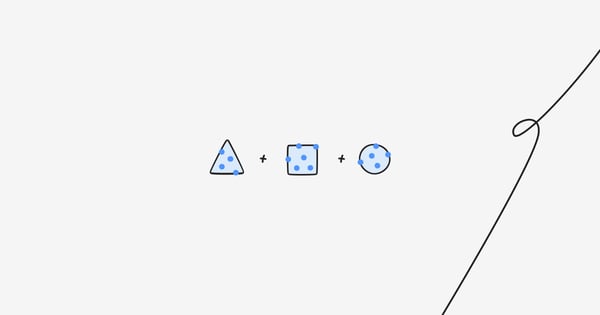When we dine out in a fancy restaurant, we might ask the waiter which wine will be the best accompaniment for our main course.
The crispness of your cold glass of Frascati paired with a light, zingy bowl of seafood linguine proves that some combinations just work.
Which is exactly why retailers love presenting us with products that are frequently bought together (FBT).
From an e-commerce perspective, there are clear benefits—provided you do it effectively.
According to Barilliance, personalized product recommendations—of which “frequently bought together” recommendations are just one example—can dramatically increase average order value.
Indeed, when shoppers interact with just a single product recommendation, their average order grows by a whopping 369 percent compared to shoppers who don’t engage with any recommendations.
But that’s not all; product recommendations also have a significant impact on conversion rates.
Barilliance’s research found that consumers who don’t engage with recommendations convert at an average rate of 1.02 percent. This number climbs by 288 percent following a single interaction with a product recommendation:
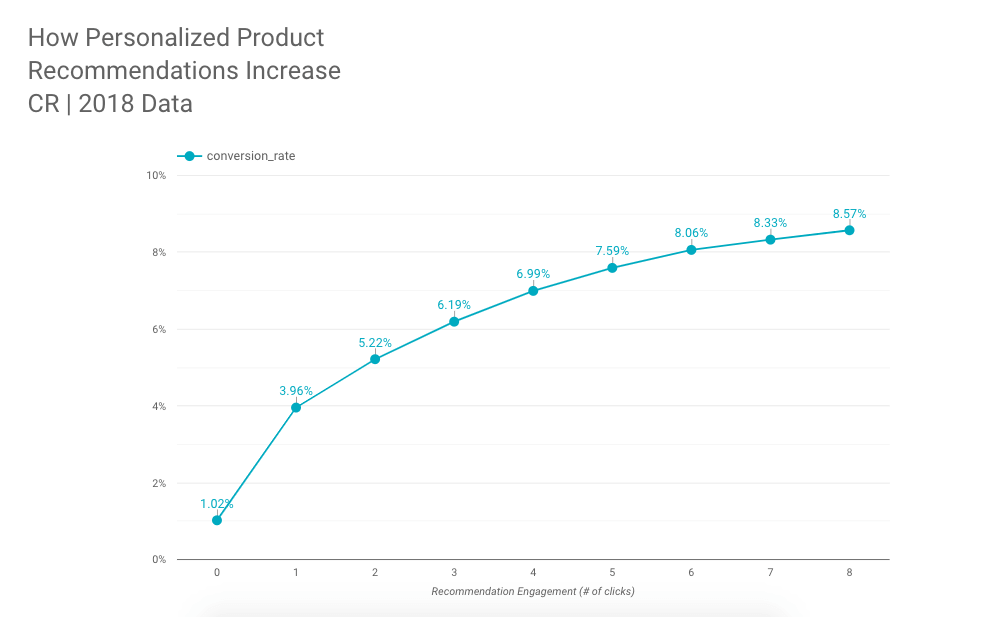
Given those impressive figures, it’s no surprise that product recommendations account for an average of 12 percent of retailers’ total online sales revenues.
However, you should know there are no guarantees in e-commerce.
Sure, a smart, personalized, well-integrated FBT function might drive your revenue through the roof. But if you get it wrong, you’ll either do nothing at all or risk annoying valuable customers. You might even end up ruining your UX and hurting your conversion rate.
Want to get it right? Follow these five frequently bought together examples.
The 5 Best Frequently Bought Together Examples
1. Amazon
This list could only start with one company.
Think of Amazon as the Tiger Woods or Serena Williams of product recommendations—they are so much better than everyone else.
While Amazon is ostensibly an e-commerce marketplace, it’s perhaps more accurate to describe Jeff Bezos’ mind palace as one massive recommendations engine.
Join me for a brief tour of the Amazon homepage and you’ll see no fewer than eight separate product recommendation features:
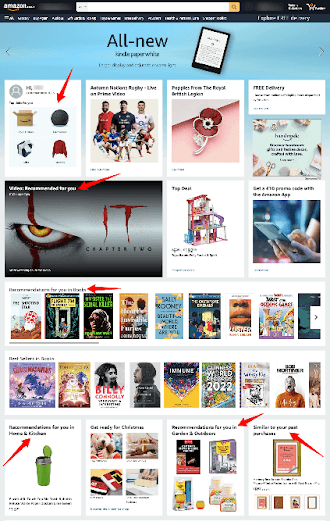
Scroll down and you’ll see some more…
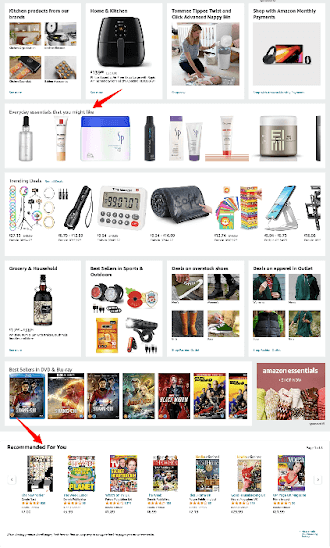
Famously, McKinsey attributed 35 percent of the brand’s revenue to its product recommendation engine.
Of course, we have no idea if that’s true. Amazon’s financials can be pretty opaque, and it has no real incentive to tell us just how much of our money it’s grabbing through algorithm-driven recommendations. But it’s not hard to imagine how effective those recommendations can be.
When you add an item to your cart, one of the first things you see—beneath a row of similar products—is Amazon’s “frequently bought together” recommendations:
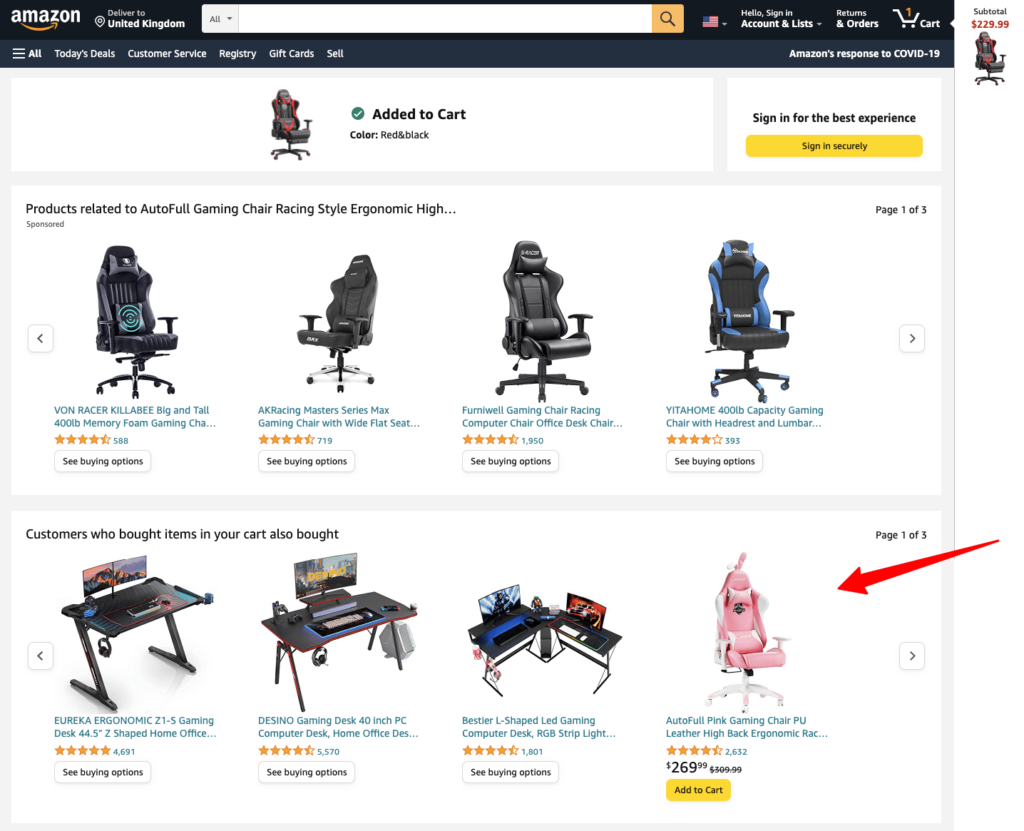
Now, I’m not going to follow that particular user journey any further, because Amazon’s “instant checkout” functionality inevitably means I’ll accidentally buy a $200 gaming chair that I absolutely do not need.
But if we take a look through some of my past orders, we can see something similar:
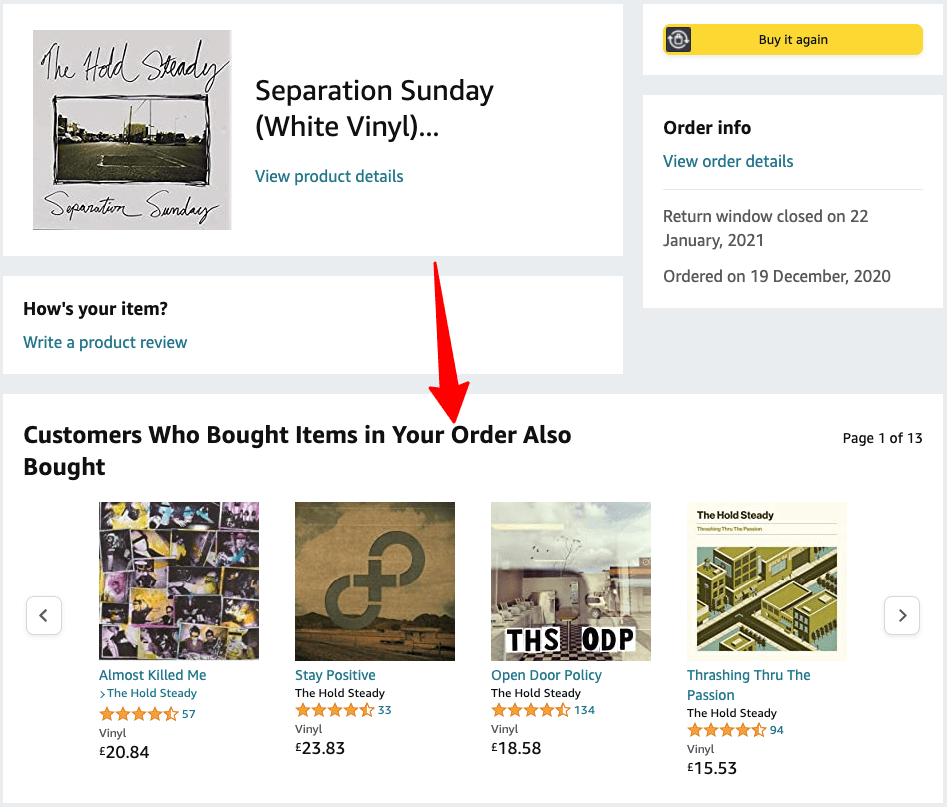
In short, every time you’re either browsing, buying a product, or reviewing products you’ve previously bought, Amazon has a suggestion for an additional or complementary purchase.
2. ASOS
It’s great to offer FBT recommendations if you have a relatively small product catalog. Like, if you sell one type of dining table and one type of chair, it’s not hard to suggest that the two would be a good fit.
Things get a little more complicated when you sell tens, or maybe even hundreds, of thousands of different products.
It’s difficult because recommendations are, ultimately, about answering subjective questions, like “which shoes would go best with this dress?”, and “what type of rug would compliment this couch?”.
That was the challenge facing ASOS. In a fascinating Medium blog, ASOS data scientist Elaine Bettaney explained how the company developed a sophisticated machine learning model capable of using a “seed product” to complete a whole outfit.
“In order for the outfit to work, each item must be compatible with all other items,” wrote Bettaney. “Our aim [was] to create a model which embeds each item in a latent style space such that for any two items the dot product (a measure of similarity) of their embeddings reflects their compatibility.”
You can see the results when you click on an ASOS product page. Toward the bottom of the page, below all the usual product information and simple “similar item” recommendations, you’ll see ASOS’ “Buy the Look” function:
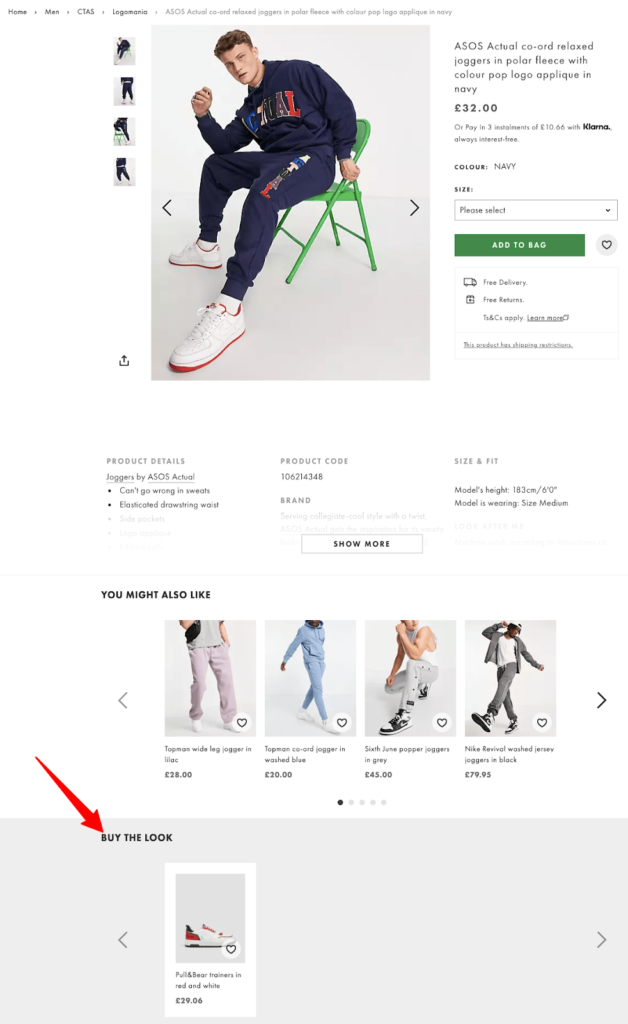
What’s really interesting here is that those trainers aren’t the same as those in the image.
As an avid follower of street fashion, it was immediately apparent to me that the model is wearing a pair of Nike Air Force 1s, whereas the sneakers in the “Buy the Look” section are from Pull&Bear.
So this isn’t a simple case of ASOS tagging all the other products that appear in the image. Instead, it’s an algorithmic recommendation, based on matching the style and color of trainers with the rest of the outfit.
Yet it’s so sophisticated that the machine learning recommendation looks near-identical to the sneaker in the image, which was presumably picked by a (human) stylist. That’s brilliant if a little scary.
3. Canyon Bicycles
ASOS and Amazon are both huge, multinational corporations. But you don’t need a billion-dollar budget to nail FBT.
Not that I’m saying Canyon Bicycles is a small company, but it’s obviously nowhere near Amazon’s league.
With the two previous examples, we’ve seen various ways to recommend similarly priced items to shoppers. But what if your “main” product costs thousands of dollars? In all but the most extreme cases, it’s going to be hard to persuade those customers to shell out another $1,000 on a “frequently bought together” item.
Unsurprisingly, Canyon uses FBT to recommend lower-priced complementary products. It does this in two ways:
- Highlighting product bundles that can be bought together at a discount; and
- Urging shoppers to “Complete Your Kit” by purchasing a bunch of other gear.
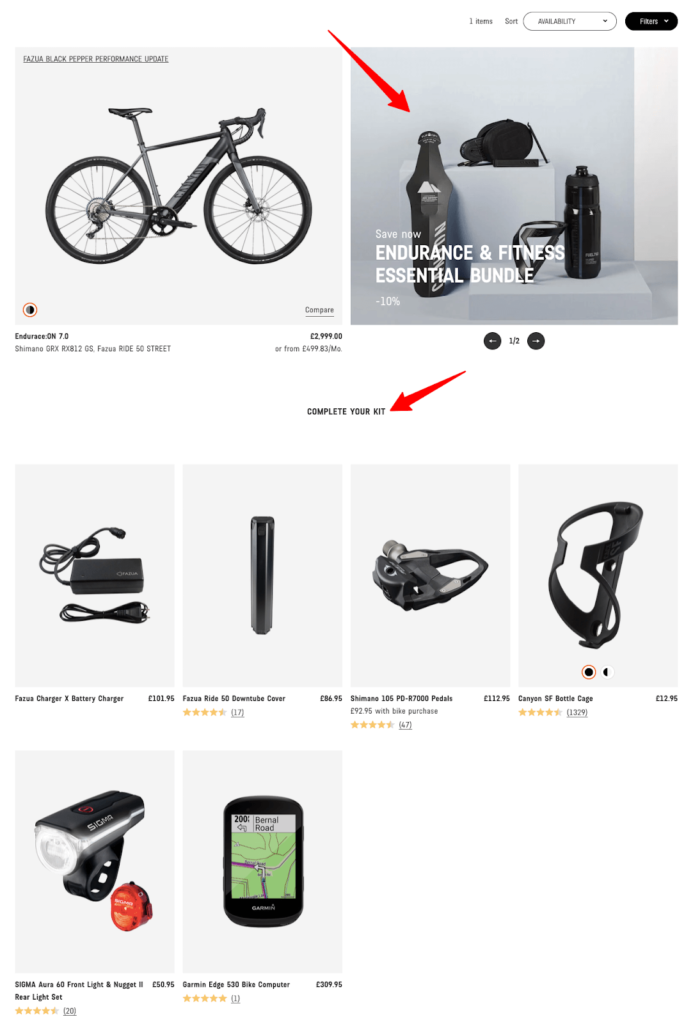
I particularly love the psychology behind the phrase “Complete Your Kit”. It’s an excellent example of FOMO-driven marketing that’s basically saying: “Sure, you can buy the bike. But you won’t enjoy the full benefit unless you also buy these six other products.”
And, to be honest, if you’re going to drop $4,000 on a bicycle, it probably doesn’t seem that big of a deal to spend another $20 on a holder for your drinks bottle.
4. Wayfair
Probably because we’ve all been forced to spend vast chunks of the last year-and-a-half staring at the inside of our homes, we’ve become obsessed with interior design.
Where once it might have been deemed socially acceptable to just fill your house or apartment with some stuff, today that stuff has to be a physical manifestation of your personality and lifestyle.
All of which plays into the hands of furniture and homeware brands like Wayfair. Now, when you’re buying a new couch or coffee table, you’re actively looking for advice on which scatter cushions or rugs will complement them best.
Wayfair effectively has two separate “frequently bought together” functions within its product pages. First up is “Shop This Collection”:
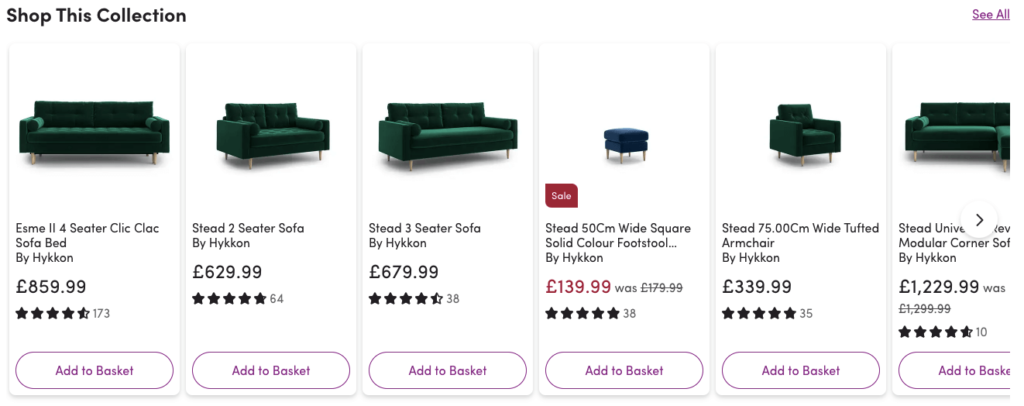
Technically it’s not actually an FBT recommender, but it showcases a bunch of products that could be bought alongside one another because they’re from the same collection, and are therefore visually similar.
Next is the actual FBT function, featuring multiple recommendations that match the style and “vibe” of the seed product:
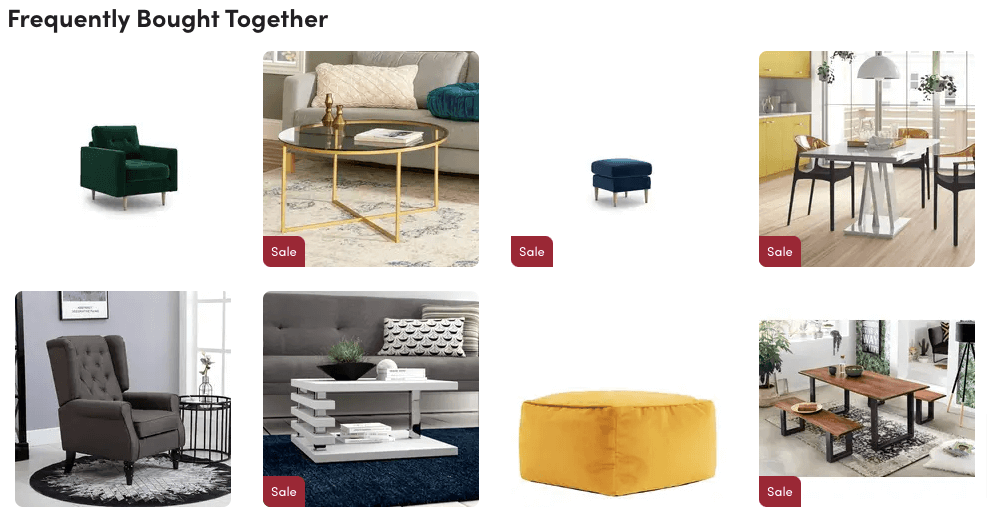
But that’s not all.
When you add an item to your shopping basket, Wayfair displays a side menu featuring a “We Also Recommend” section:
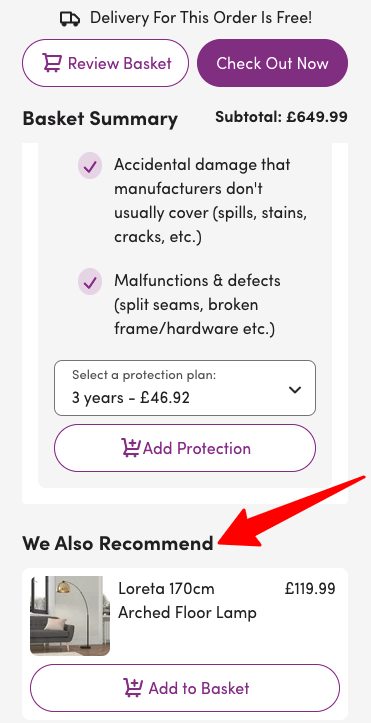
That’s a totally different recommendation to any of the products highlighted by the “Shop This Collection” and FBT features, so I can only assume it’s informed by a different algorithm.
And, as if that wasn’t enough, when you review your basket you’re presented with a bunch of other products that you “May Also Need”:
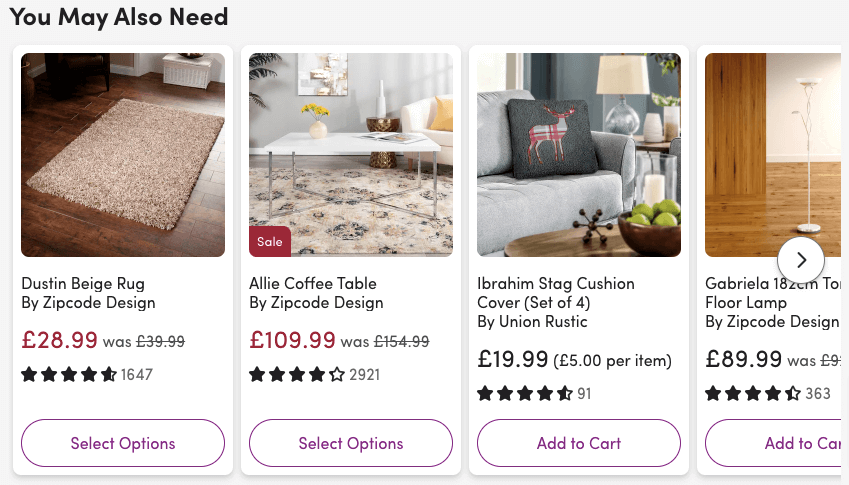
Credit where it’s due; Wayfair is almost as relentless as Amazon in its pursuit of upselling and cross-selling.
5. Best Buy
Next up, let’s take a look at consumer electronics.
In some ways, this is pretty similar to the world of household furnishings: we’re talking lots of big-ticket items, each of which can be bought in tandem with potentially dozens of complementary products.
However, there’s a big difference.
Whereas furnishing a house or assembling a stylish outfit-of-the-day are, at least to some extent, subjective matters, that’s not the case if you’re buying tech products. If they’re incompatible, it doesn’t make a blind bit of difference how stylish they look beside one another—they’ll be totally useless when purchased together.
That means if an electronics retailer is going to offer a frequently bought together service, it had better get things right. Recommend the wrong product pairings and you won’t just have to deal with a return; you risk generating harmful negative reviews too.
Fortunately, Best Buy nails it. Not just by recommending relevant products, but also through the positioning of its FBT function.
Land on a product page and the far right of the screen is taken up by a single column full of “also bought” recommendations:
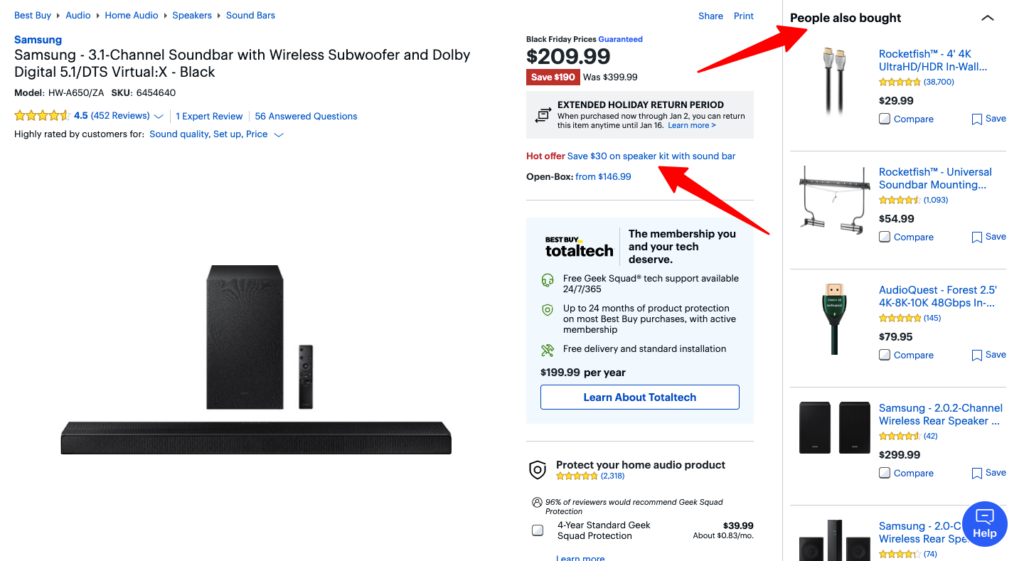
That’s far more prominent than any of the other retailers I’ve looked at. Most tuck their “frequently bought together” recommendations way down the product page, or don’t mention them at all until the shopper starts the checkout process.
Also, props for the way Best Buy sneaks in a multibuy deal—save $30 on a speaker kit when purchased with a soundbar—just beneath the price tag. It’s not exactly the same as “frequently bought together”, but it’s close enough to warrant a mention.
Next, when you add-to-basket, Best Buy serves you with a popup that:
- Confirms the item you’re buying;
- Offers Best Buy’s aftersales support product; and
- Lists 20 items that are frequently bought alongside the original product.
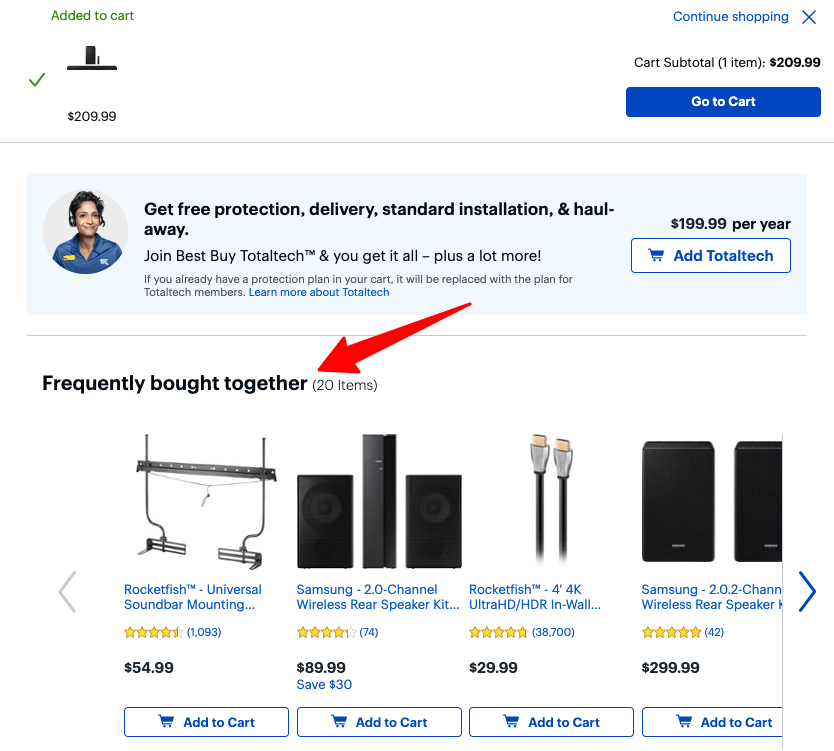
This works so well that it feels more like a customer service feature than an attempt at upselling or cross-selling.
After all, if you’re buying a soundbar, there’s a pretty strong chance you’re also going to need a wall mounting bracket. And it’s certainly not inconceivable you’ll want some additional speakers, and maybe an extra cable or two to connect your other gadgets.
Best Buy’s FBT function displays all these supplementary purchases in one place, meaning you don’t have to click “Continue shopping” and search for them yourself. That’s an absolute godsend for a lazy shopper like me.
Conclusion
Nailing your “frequently bought together” functionality means getting two things right:
- The tech: Your algorithm needs to make smart, relevant recommendations that will actually benefit the shopper.
- The UX: Machine learning can’t do all the heavy lifting. For your FBT function to deliver results, it needs to appear in all the right places. That means striking a balance between offering prominent recommendations and keeping the path to conversion simple and friction-free.
Don’t expect to nail those two key elements overnight.
Instead, plan to do plenty of testing and tinkering to find the solution that works best for your users and delivers the best results.
That takes time, but it’ll all be worth it when your average order value skyrockets.

